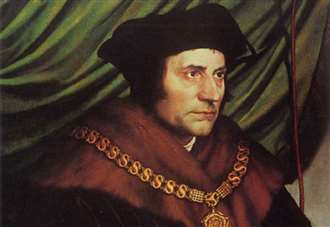Permission is being sought to exhume Thomas More’s head 500 years after it was put on a pike on London Bridge.
St Dunstan’s, an Anglican church in Canterbury where the remains of the Tudor lawyer lie in a vault, has applied for permission to have them unearthed to potentially place in a shrine, The Telegraph and The Times reports.

Henry VIII’s lord chancellor was beheaded at Tower Hill in London in 1535, after refusing to recognise the king as head of the Church of England when he declared independence from Rome during the Reformation.
More was martyred by the Vatican in 1935, meaning his remains are considered a holy relic in Catholicism.
The parochial church council (PCC) at St Dunstan’s is looking to prepare More’s remains in time for the 500th anniversary of his death in 2035, but requires permission from the commissary court in Canterbury, which rules on church buildings and grounds.
Born the son of a successful London lawyer in 1478, More rose to become Lord Chancellor and was a key adviser to Henry VIII.
He was an influential theologian whose 1516 book Utopia described the political system of an imagined ideal state.
He definitely travelled through Canterbury at least twice during his lifetime.
The first was with the King’s party who met Emperor Charles V in the city on the way to the Field of the Cloth of Gold festival in France in 1520.
The second was in 1527 with Cardinal Wolsey’s party on the way to Rome to seek agreement from the Pope for Henry’s divorce from Catherine of Aragon.
And it was the latter which sparked More’s downfall, as he opposed the divorce and refused to recognise the King as head of the Church of England, as required in the 1534 Act of Supremacy.
He also refused to acknowledge the King’s marriage to Anne Boleyn as legal.
More met his grisly fate on July 6, 1535, and his head was taken from the scaffold and parboiled, before being stuck on a pole on London Bridge.
His daughter Margaret – who was married to William Roper of Canterbury – reportedly bribed the bridge-keeper to knock it down and she smuggled it home.
More’s skull was eventually buried with her in the Roper vault at St Dunstan’s Church in 1577.
The vault was later enlarged and the skull transferred to a niche behind a grille where it remains, last seen during an investigation in 1978.
St Dunstan’s holds an annual St Thomas More commemoration service.
